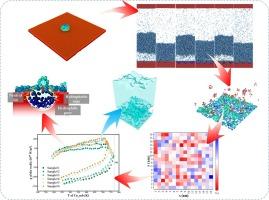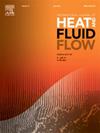Research on molecular dynamics of heat and mass transfer of liquids on surfaces with different shapes of nanoscale pore structures
Abstract
Pores are a common class of structures with enhanced heat transfer properties. The pores on the surface can usually be categorized into two types: dilated pores and contracted pores. In order to deeply investigate the effect of the surface on the phase change of the liquid layer during the heating and cooling process, this study examines the successive processes of gradual heating of the heat source, constant temperature of the heat source and cooling of the heat source. The boiling heat transfer characteristics at the solid–liquid interface and the evaporation characteristics at the liquid–gas interface were studied in depth by calculating these parameters such as the water layer heat flux, the wall heat flux, and the number of evaporating water molecules. The results show that wettability affects the time, position and kinetic energy of bubble generation. It is notable that a surface with a dilated pore structure and composite wettability exhibits superior heat transfer characteristics compared to a single hydrophilic surface. In addition, this nanoscale porous surface exhibits excellent heat transfer performance at lower wall temperature conditions, making it ideal for applications at higher heat source temperatures. It is worth noting that both the hydrophobic dilated pore structure and the contracted pore structure possessing the hydrophobic edge are not favorable for heat transfer.


 求助内容:
求助内容: 应助结果提醒方式:
应助结果提醒方式:


